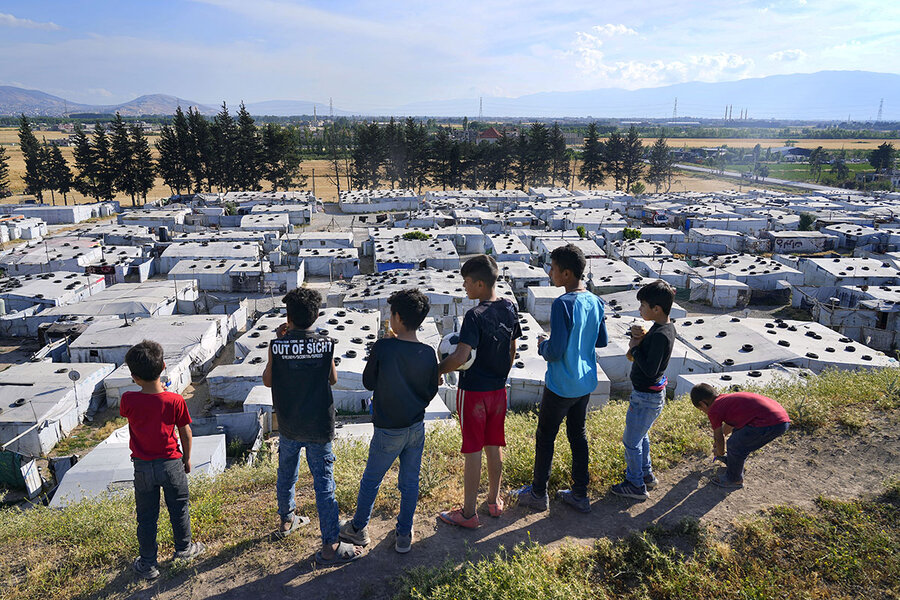World Refugee Day: A crisis builds, testing individuals and nations
Loading...
Worldwide, the number of people classified as forcibly displaced surged last year by 19 million – the largest single-year jump in United Nations records, with increases continuing so far in 2023.
That tally, released last week by the U.N. High Commissioner for Refugees, symbolizes difficult global challenges, including the war in Ukraine and conflicts elsewhere, as well as the effects of political, economic, and environmental instability.
But this World Refugee Day, June 20, also comes with some more hopeful signs and reminders of the perseverance that pushes many refugees to move forward despite hardship.
Why We Wrote This
A story focused onOn World Refugee Day, our chart package highlights where displaced people are coming from – and heading to – as a U.N. report calls for more global action to help.
Last year, nearly 6 million people displaced within their own countries returned to their hometowns. That’s up 8% from the previous year.
“While the number of refugees and [people displaced within their own countries] ... who found a solution increased in 2022 compared to the previous year, durable solutions continue to remain a reality for very few people,” the U.N. report said. For refugees who fled their home country, those durable solutions can include voluntary repatriation, planting roots in their new location, or resettling to a third country.
Amid news of rising needs, aid groups such as the International Rescue Committee are highlighting the talents, initiative, and creativity that refugees bring with them.
As our charts with this article show, most people forced to flee their nations end up in neighboring countries – often poor ones – rather than migrate longer distances.
“Remarkable solidarity continues to be shown for refugees and other forcibly displaced populations around the world,” the report said, while calling for expanded international cooperation under the 2018 Global Compact on Refugees.
The 2018 compact has four key goals: easing pressures on host countries, enabling greater refugee self-reliance, making settlement in third countries easier, and ensuring the conditions that would allow people to return in safety and dignity to their countries of origin.
U.N. High Commissioner for Refugees Filippo Grandi, in releasing the report on June 14, pointed to a growing challenge.
“We have 110 million people that have fled because of conflict, persecution, discrimination, violence – often mixed with other [factors], in particular the impact of climate change,” he told reporters in Geneva. “It’s quite an indictment on the state of our world, if I may say, to have to report that.”






